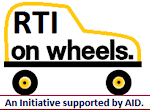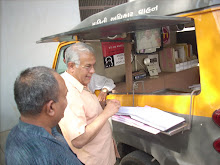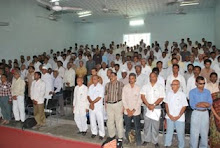Moneylife: Pune: Friday, 31 March 2023.
Undoubtedly, the enormously pending second appeals or complaints are major hurdles to the quick dissemination of information under the right to information (RTI) Act. A small percentage of the piling of pendency is also because of a series of RTI applications filed by the same applicant, sometimes ad nauseum.
Secondly, the penning of wrong applications where information is sought beyond the purview of the RTI Act also contributes to the time consumption of the central information commissioners.
Here’s a classic case, where the RTI applicant not only went beyond the scope of the RTI Act, fervently submitted a series of RTI applications but finally did not attend the second appearance.
RTI applicant YSV Prasada Rao files 13 RTI applications between 24 March 2022 and 6 June 2022. The central public information officer (CPIO) replied between 31 March 2022 and 20 June 2022. His first appeal, since he is not satisfied with the CPIO replies, is heard between 18 June 2022 and 13 July 2022. His second appeal is received by the central information commission (CIC) between 23 June 2022 and 29 July 2022. The date of the hearing and decision of the CIC is 28 March 2023.
The information Mr Rao sought under RTI was all about asking the public authority, the prime minister’s office (PMO) in this case, for action. His RTI requisition was as follows:
The CPIO of the PMO office replied on 25 March 2022, stating, “It is informed that the request for action is beyond the scope of the RTI Act. In addition, it is conveyed that the applicant may please refer to the relevant frequently asked questions (FAQs) on the website of the office, i.e. http:www.pmindia.gov.in.”
Despite this, Mr Rao filed a first appeal. The FAA, terming it as ‘miscellaneous information’ replied, “I have examined the records in this matter. On perusal of records, it is clarified in the context that no information as defined in Section 2(f) of the RTI Act, is sought and subsequently furnished the response online.”
He also clarified that “The CPIO, PMO is not obliged to direct or cause action to be taken in respect of matters resting with other public authorities, as it is not given for in the Act. Further, the Act requires the supply of such information only which already exists or is held by the public authority. It is beyond the scope of the Act for a public authority to create information. Hence, the stand of the CPIO, PMO is in order.”
Mr Rao then filed the second appeal with the CIC. During the hearing, chief information commissioner YK Sinha observed in his order that “The appellant remained absent despite being served the hearing notice in advance. The respondent Praveen Kumar, deputy secretary (PMO), participated in the hearing through video conference.”
Mr Sinha disposed of the case, ordering that information as available with the public authority has been duly provided by the PIO, in terms of the provisions of the RTI Act. The appellant has chosen not to buttress the case nor appeared for hearing in these circumstances; the Commission finds that no further adjudication is warranted in these circumstances, the Commission finds that no further adjudication is warranted in these cases.”
For RTI users, the important part to remember while applying is that the information sought should not be vague. The RTI applicant should not ask questions (mostly to redress their grievance) but only seek information that is available on records with the public authority.
Undoubtedly, the enormously pending second appeals or complaints are major hurdles to the quick dissemination of information under the right to information (RTI) Act. A small percentage of the piling of pendency is also because of a series of RTI applications filed by the same applicant, sometimes ad nauseum.
Secondly, the penning of wrong applications where information is sought beyond the purview of the RTI Act also contributes to the time consumption of the central information commissioners.
Here’s a classic case, where the RTI applicant not only went beyond the scope of the RTI Act, fervently submitted a series of RTI applications but finally did not attend the second appearance.
RTI applicant YSV Prasada Rao files 13 RTI applications between 24 March 2022 and 6 June 2022. The central public information officer (CPIO) replied between 31 March 2022 and 20 June 2022. His first appeal, since he is not satisfied with the CPIO replies, is heard between 18 June 2022 and 13 July 2022. His second appeal is received by the central information commission (CIC) between 23 June 2022 and 29 July 2022. The date of the hearing and decision of the CIC is 28 March 2023.
The information Mr Rao sought under RTI was all about asking the public authority, the prime minister’s office (PMO) in this case, for action. His RTI requisition was as follows:
- I filed a grievance with registration number PMOPG/E/2022/0065017 on 24/2/2022 saying: Hon Prime Minister, My public grievance with registration number PMOPG/E/2016/11083 dated 10/01/2016 is disposed of after more than five years and six months on 16/07/2021 with remarks if your grievance is not resolved yet then please resubmit with all details. It is a horrible justice delivery system. Therefore, I request your kind intervention in this matter. On 28 Dec 2021, at 8.20pm, I sent an email to the Hon’ble Prime Minister.
- On 15/04/2022 I filed with registration number PMOPGE/2022/010877 saying:
- Honourable Prime Minister, I filed a grievance with registration number PMOPG/E?2022/0065017 on 24/02/2022. Today when I checked, it shows under process against Current Status. Secondly, there is no column for reminders in the Grievance Status for registration number: PMOPGE/F/2022/0065017. I once again request your kind and immediate intervention.
- On 07/05/2022 my grievance with Registration no PMOPGE/F/2022/010877 was closed by the officer Satish Kerba Jadhav (director), department administration reforms and public grievances, PG Division saying: Sir, the provision is already there, kindly make use of it. Millions of citizens are already using it.
The CPIO of the PMO office replied on 25 March 2022, stating, “It is informed that the request for action is beyond the scope of the RTI Act. In addition, it is conveyed that the applicant may please refer to the relevant frequently asked questions (FAQs) on the website of the office, i.e. http:www.pmindia.gov.in.”
Despite this, Mr Rao filed a first appeal. The FAA, terming it as ‘miscellaneous information’ replied, “I have examined the records in this matter. On perusal of records, it is clarified in the context that no information as defined in Section 2(f) of the RTI Act, is sought and subsequently furnished the response online.”
He also clarified that “The CPIO, PMO is not obliged to direct or cause action to be taken in respect of matters resting with other public authorities, as it is not given for in the Act. Further, the Act requires the supply of such information only which already exists or is held by the public authority. It is beyond the scope of the Act for a public authority to create information. Hence, the stand of the CPIO, PMO is in order.”
Mr Rao then filed the second appeal with the CIC. During the hearing, chief information commissioner YK Sinha observed in his order that “The appellant remained absent despite being served the hearing notice in advance. The respondent Praveen Kumar, deputy secretary (PMO), participated in the hearing through video conference.”
Mr Sinha disposed of the case, ordering that information as available with the public authority has been duly provided by the PIO, in terms of the provisions of the RTI Act. The appellant has chosen not to buttress the case nor appeared for hearing in these circumstances; the Commission finds that no further adjudication is warranted in these circumstances, the Commission finds that no further adjudication is warranted in these cases.”
For RTI users, the important part to remember while applying is that the information sought should not be vague. The RTI applicant should not ask questions (mostly to redress their grievance) but only seek information that is available on records with the public authority.














































































